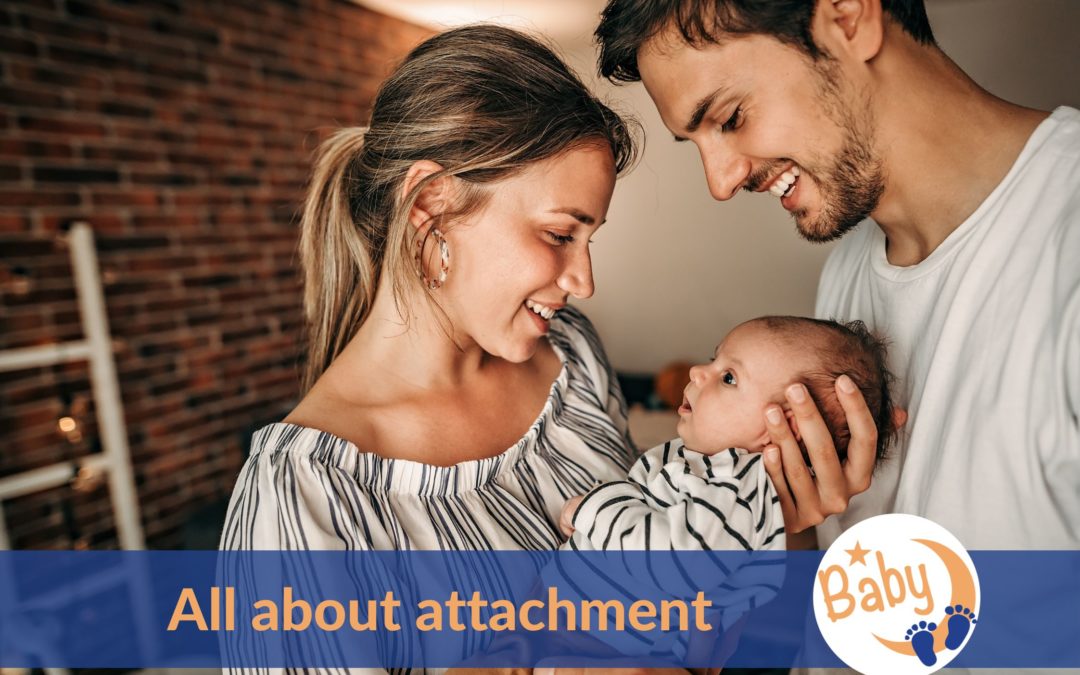All about attachment
Attachment seems to be a very sensitive topic, not only for babies, children or their parents or in connection with sleep, but for everybody. Because, unless you are a monk living remotely in the high mountains of Himalaya, attachment is a vital component of life, love and survival.
In this serial of articles I want to bring some light into what attachment theory is, how it all started almost 90 years ago and how we came to limit it to a modern but narrow meaning in the current world of parenting today.
I’ll start with the theory of attachment which commenced back in the 1930s and the different types of attachment. Then I’ll take a big leap into today’s perception of attachment and the new concept of attachment parenting. The relationship between attachment and baby sleep training together with our sensitivity to baby cry, will also be presented as a debate with scientific and empiric evidence in this controversial world of attachment parenting.
Theory of attachment
So let’s start with the basics of the attachment theory whose founder is considered to be the British psychoanalyst John Bowlby. He researched the effects of separation between infants and their caregivers in the 1930-40s and focused on how attachment difficulties were transmitted from one generation to the next one.
He described attachment as
“an emotional bond developed between an infant and an attachment figure (usually the primary caregiver), essential for normal social and emotional development”.
Bowlby also believed that attachment showed in the form of baby crying and clinging is an evolutionary mechanism, meant to keep the infant close to its primary caregiver and thus improving the child’s chances of survival.
Attachment patterns
Mary Ainsworth, a psychologist who worked with and extended Bowlby’s theory on attachment in the 1960s and ‘70s, introduced the concept of the “secure base” and developed a theory of 3 attachment patterns in infants, based on their early interactions with caregivers:
- secure attachment,
- avoidant attachment and
- anxious attachment.
Latest research has identified another form of attachment: the ambivalent one.
According to Bowlby and Ainsworth, the most common style of attachment (and the most desirable one) is secure attachment when children show discomfort if separated from their caregiver and joy when they are reunited. Moreover, when scared, securely attached children are always seeking comfort from their caregivers.
Children who are securely attached as infants tend to develop higher self-esteem, better emotional regulation and more autonomy as they get older. These children also tend to be more resilient, perform better in school, cope better under stress, have successful social relationships and more leadership qualities and experience less depression and anxiety.
In other words, attachment theory states that the primary caregivers who are available and responsive to a baby’s needs allow the child to develop a sense of security. The infant learns they can rely on the caregiver who will then be a secure base for them, necessary to discover the world, to explore, learn and relate, and for wellbeing, motivation and opportunity to do so.
Moreover, Bowlby and others demonstrated that responsiveness & nutrition were the main determinants for attachment.
At the same time, the American psychologist Harry Harlow came to similar results with his “infamous” experiments from the 1950s with monkeys separated from their mothers after birth. His findings emphasized the huge importance of maternal touch (more than the feeding) in infant development and their later responses to stress and emotion regulation.
Though early researchers studied mothers as the primary caregiver, modern research shows that fathers, grandparents, babysitters, and even older siblings can be important attachment figures. Moreover, more recent studies from Israel, Netherlands and east Africa showed that children with multiple caregivers grow up not only feeling secure but developed “more enhanced capacities to view the world from multiple perspectives”.
As Dr. Gabor Mate, the famous Hungarian-Canadian physician and best-selling author with a special interest in childhood development, nicely puts it:
“mothers have a different bond with their kids just because they stay with their kids, whereas the father is typically at work and just “visiting” the kids at home. On the other hand, those fathers who have the good fortune of staying home with their kids learn to “mother” their own children.”
Caregivers who provide a secure attachment are responsive, warm, loving, attuned to baby’s needs and emotionally available. As a result, these babies grow to be confident in the caregiver’s ability to help them regulate their emotions. At the same time, these babies feel free to express their positive and negative feelings, their big & small emotions and don’t develop a defence mechanism to cope with life’s challenges.
So, if you feel like you want to dive more into the topic of attachment parenting and baby sleep, read the next article on this topic and then book a free 20 min. Discovery Call so we can chat.
